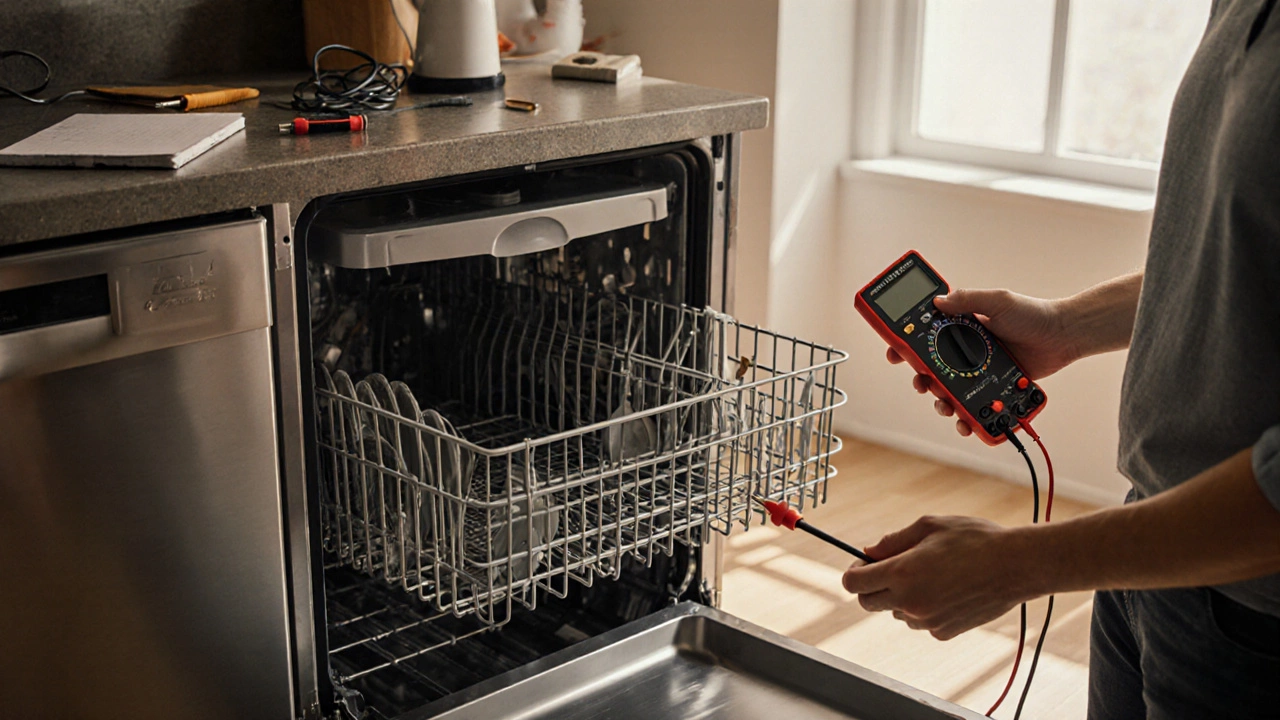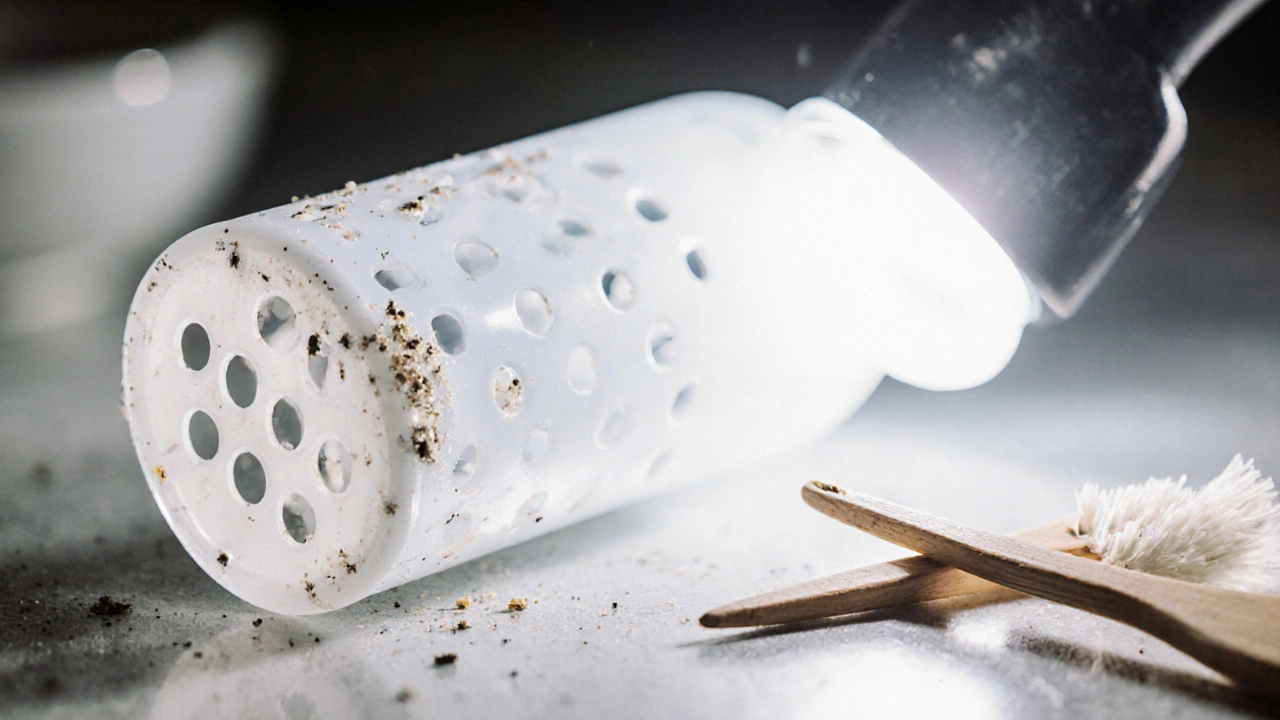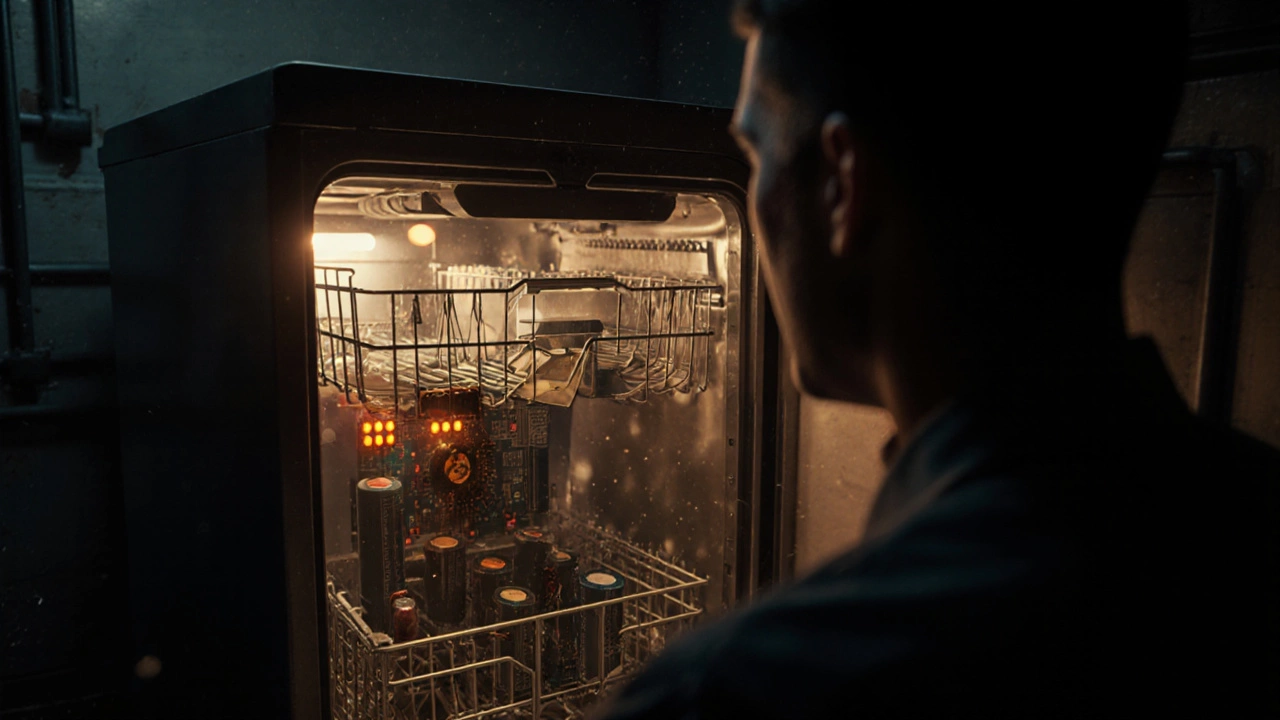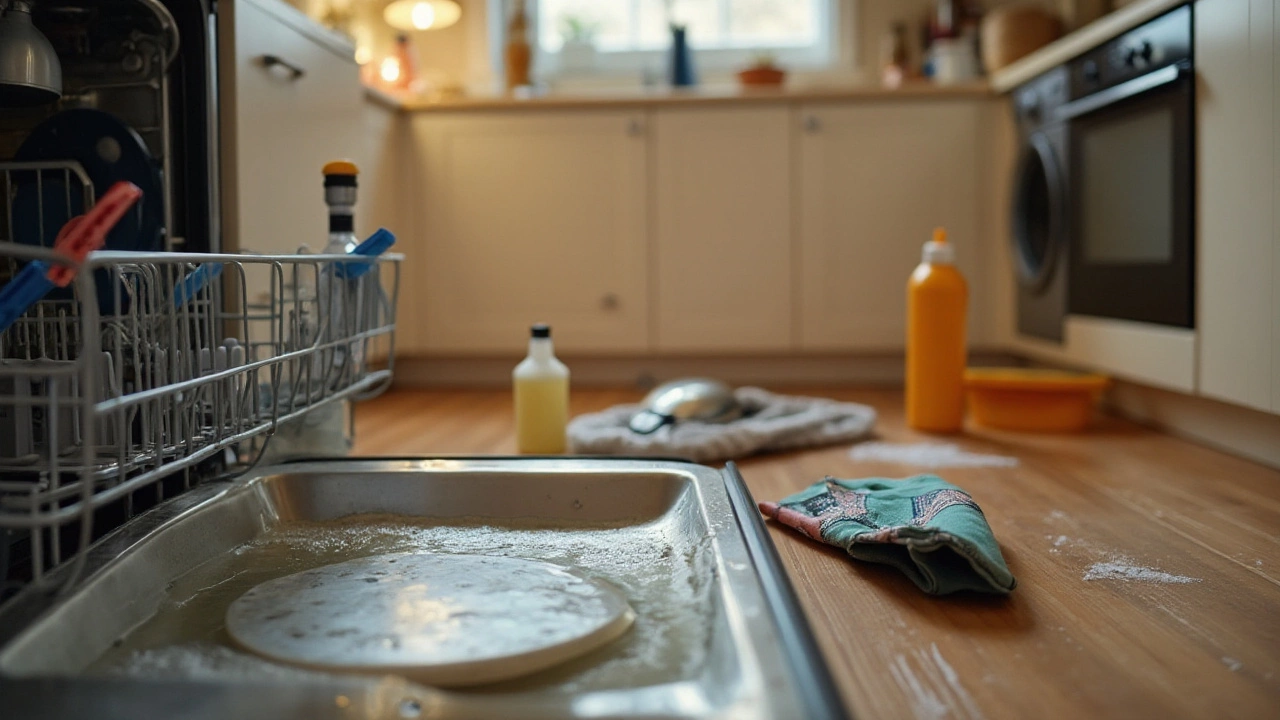
- 19 Oct 2025
- Gideon Thornton
- 0
When your dishwasher suddenly stops doing its job, it feels like a mini‑crisis in the kitchen. Before you grab the wrench or call a technician, you can run a systematic check that often pinpoints the issue in minutes. This guide walks you through the exact questions to ask your appliance, the components to inspect, and the simple tests that separate a simple fix from a deeper repair.
Quick Takeaways
- Check power, door latch, and water supply first - they cause over 40% of failures.
- Inspect the spray arm the rotating component that sprays water onto dishes for blockages.
- Test the drain pump the motor that expels wastewater if water stays at the bottom.
- Read any error code on the display - most modern machines speak a diagnostic language.
- If the problem involves the control board the electronic brain that coordinates cycles, it’s usually time for a pro.
Understanding How a Dishwasher Works
Dishwasher a household appliance that cleans dishes by spraying hot water mixed with detergent, then draining and drying the load may look like one solid box, but it relies on a handful of moving parts that each have a job. Knowing what each part does makes the diagnosis intuitive.
The basic cycle starts with water entering through the water inlet valve the solenoid‑controlled valve that lets fresh water into the tub. Once the tub fills, the spray arm a rotating component with small holes that distributes water spins, pushing water onto the dishes. After washing, the water drains via the drain pump a motor‑driven impeller that forces water out of the machine. Finally, the heating element an electric coil that raises water temperature and produces heat for drying works together with the thermostat to finish the cycle.
Common Symptoms and What They Usually Mean
Before you pull the panel, match the observed behaviour to the most likely culprit.
- Not cleaning - Often caused by clogged spray arms, a dirty filter, or low water temperature.
- Not draining - Usually a blocked drain hose, a failed drain pump, or a stuck float switch a buoyant sensor that detects water level.
- Not heating / not drying - Check the heating element, thermostat, or thermal fuse.
- Leaking - Look for a cracked door gasket, loose hose connections, or a faulty water inlet valve.
- Won’t start or fill - Verify power, door latch, and that the control board is receiving a command.

Step‑by‑Step Diagnostic Checklist
- Confirm power and door latch. Plug the machine into a known‑good outlet and listen for a click when the door closes. Many models lock the start button unless the latch is fully engaged.
- Check water supply. Make sure the supply valve is fully open. Inspect the inlet hose for kinks and the mesh filter at the valve end for sediment.
- Inspect the spray arm. Remove it (usually by twisting off) and rinse under hot water. Use a toothpick to clear any debris from the holes.
- Clean the filter and sump. The filter sits at the bottom of the tub; scrape out food particles and rinse. A clogged filter reduces water flow and can cause draining issues.
- Test the drain pump. Listen for a humming or buzzing sound during the drain cycle. If you hear a whir but water remains, the pump impeller may be blocked. Remove the pump housing (refer to the manual) and clear any foreign objects.
- Examine the float switch. Float up and down by hand; it should move freely and click when it reaches the full‑water line. A stuck float can falsely signal “full” and stop the cycle.
- Check the heating element. After the wash, feel the tub’s bottom - it should be hot. If not, use a multimeter set to ohms; a healthy element reads between 10‑30 Ω. An open circuit (infinite resistance) means replacement.
- Read error codes. Most newer dishwashers display a numeric code when a fault occurs. Look up the code in the user manual - often it points directly to the offending part.
- Evaluate the thermostat and thermal fuse. Use the multimeter to test continuity. No continuity indicates a blown fuse, which stops heating and may also halt the cycle.
- Inspect the control board. Look for burnt traces, swollen capacitors, or loose connectors. If the board shows signs of damage, it’s usually cheaper to replace the whole unit than to troubleshoot every downstream component.
Follow these steps in order - each one eliminates a common cause and narrows the field, saving you time and unnecessary part swaps.
Common Error Codes and Their Meanings
| Code | Typical Cause | Quick Fix |
|---|---|---|
| E1 | Water fill sensor failure | Check inlet valve and water pressure; clear sensor blockage. |
| E2 | Overflow / Float switch stuck | Free the float, clean the switch area. |
| E3 | Drain pump malfunction | Inspect pump impeller, clear debris, test with multimeter. |
| E4 | Heating element failure | Measure resistance; replace element if open. |
| E5 | Thermostat or thermal fuse blown | Test continuity; replace faulty component. |

Pro Tips & Common Pitfalls
- Run a hot‑water rinse before the first cycle of the day. This confirms the inlet valve opens correctly and helps the heating element reach temperature faster.
- Don’t overload the racks. Over‑crowding blocks spray arm rotation and leaves food residue on dishes.
- Use the correct type of detergent. Too much powder can leave a film that clogs the filter.
- When testing electrical parts, always disconnect power to avoid shocks.
- Keep a spare float switch a simple plastic lever that trips at a set water level on hand - they are inexpensive and often the quickest fix for “not draining” complaints.
When to Call a Professional
If you’ve walked through the checklist and the dishwasher still won’t complete a cycle, the fault is likely in the control board or a hidden wiring issue. Also call a qualified technician if you notice burnt smells, water leakage around the motor, or if the unit is still under warranty - DIY repairs could void coverage.
Frequently Asked Questions
Why does my dishwasher stop mid‑cycle?
Most mid‑cycle stops are triggered by safety sensors - a stuck float switch, an overheating heating element, or a blocked drain pump. The appliance will display an error code or simply shut off to protect itself.
How can I test if the drain pump is working?
Run a short wash and listen for a faint humming during the drain phase. If you hear the motor but water stays, the impeller is likely jammed. Remove the pump housing, clear any debris, and retest with a multimeter for continuity.
My dishwasher smells bad - is it a cleaning issue?
A sour odor usually means food particles are trapped in the filter or spray arm. Clean the filter, run a hot‑water cycle with a cup of white vinegar, and wipe the door gasket to eliminate mold.
Can I replace the heating element myself?
Yes, if you’re comfortable working with basic tools and a multimeter. Disconnect power, remove the lower rack, unbolt the element, test resistance, and install the new part. Remember to reseal the tub with the provided gasket.
What does error code ‘E3’ mean on most dishwashers?
E3 almost always points to a drain pump problem - either a mechanical blockage or an electrical failure. Start by clearing the pump housing and checking the pump’s continuity.



